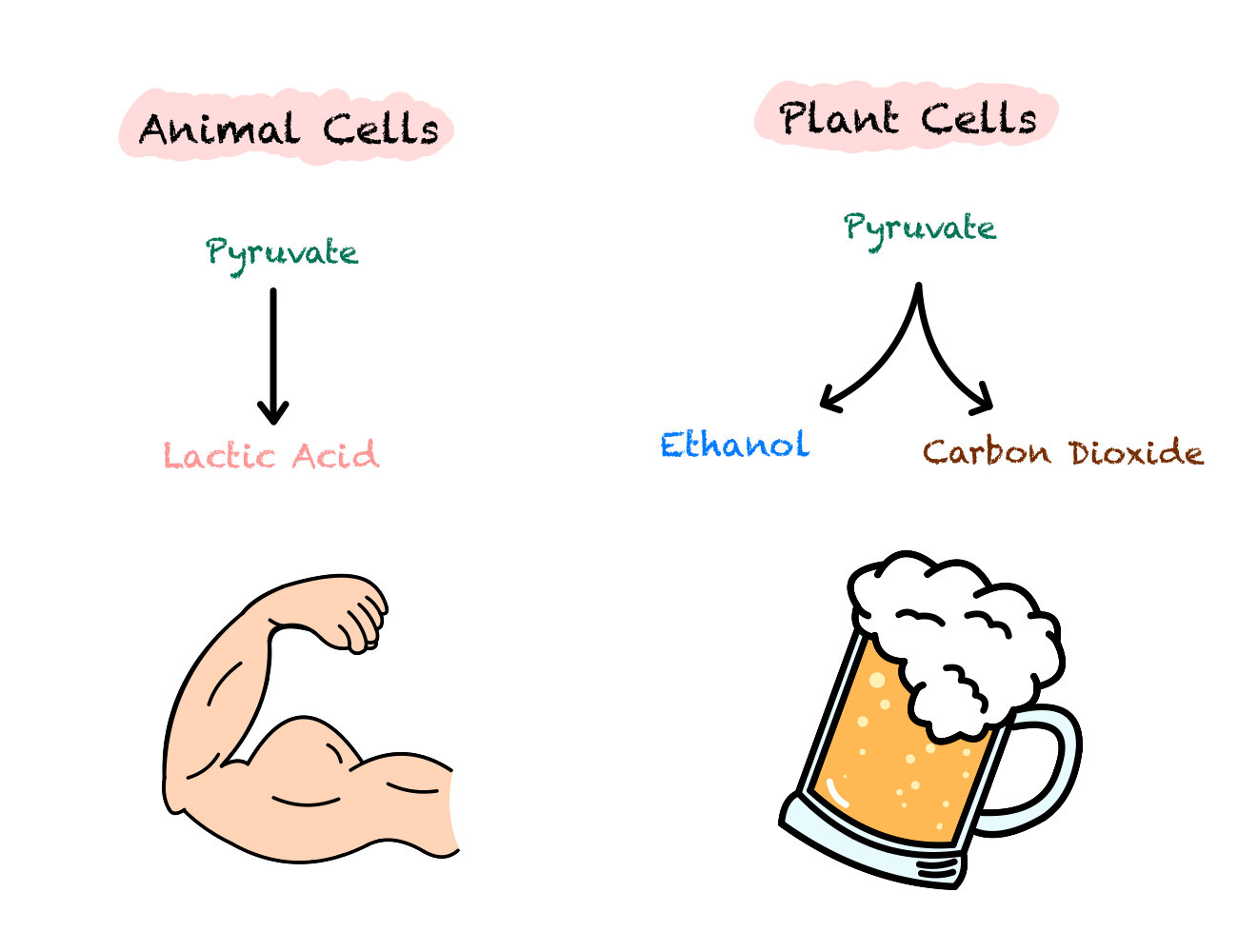Respiration
Respiration gives us energy, which is required for many cellular activities.
These include: cell division, protein synthesis, muscle contraction, transmission of nerve impulses and growth and repair.
This topic can often be tough to remember, so we are going to break it down into chunks and highlight the important components of respiration.
Aerobic respiration is the breakdown of glucose to form energy in the presence of Oxygen.
Anaerobic respiration (Fermentation) is the breakdown of glucose to form energy when Oxygen is not present.
Remember to check out “Study Tips” for the best ways to learn and remember sections like this.
Energy
We require energy for many cellular activities. We can get this energy from the chemical energy stored in glucose. In all cells, energy is released from glucose through a series of enzyme-controlled reactions.
Energy released from breaking down glucose is used to form ATP. ATP can transfer energy in cells to be used in cell functions such as active transport.
When energy from ATP (adenosine triphosphate) is required, it is broken down into ADP (adenosine diphosphate) + Pi (phosphate). Energy is release with the breakdown of ATP to ADP + Pi.
Energy is the required to transform ADP + Pi to ATP.
Aerobic Respiration - Step 1
In step 1, GLUCOSE within the cytoplasm of the cell is broken down into two molecules of PYRUVATE. This occurs in the cytoplasm.
The breakdown of glucose to pyruvate releases enough energy to create two molecules of ATP (ADP + Pi + energy = ATP).
If oxygen is present, the Pyruvate continues onto step 2, to create more ATP.
Aerobic Respiration - Step 2
Further breakdown of pyruvate depends on whether oxygen is present or not.
Pyruvate travels to the mitochondria and, in the presence of oxygen, is broken down into carbon dioxide (CO2) and water. This releases a large amount of energy, creating a large number of ATP molecules.
Fermentation
When oxygen is not present, pyruvate cannot be completely broken down and less energy is created. This is also called anaerobic respiration and it occurs in the cytoplasm.
In animals, if oxygen is not present, pyruvate is converted to Lactate (lactic acid). For your exams use the term Lactate rather than lactic acid.
When you are doing strenuous exercise, your muscle don’t get all of the oxygen that they require to break down pyruvate to create energy. So your muscles don’t break pyruvate down into CO2 and water, instead it is broken down into lactic acid. Lactic acid gives you the feeling of muscle cramps.
In plants and yeast cells, when oxygen is not present, pyruvate is converted to ethanol and CO2.
This whole process of anaerobic respiration/fermentation only creates 2 ATP, making it less efficient than aerobic respiration.
Key Points!
-
Respiration
Respiration is the break down of glucose to create energy for cells.
Cells require energy for cell division, protein synthesis, muscle contraction, transmission of nerve impulses and growth and repair.
-
Energy
Energy in cells is stored in the form of ATP.
To release energy from ATP, it must be broken down into ADP + Pi.
-
Respiration Step 1
In step 1 of respiration, glucose molecules are broken down into 2 pyruvate molecules, creating 2 ATP.
This is controlled by a series of enzyme-controlled reactions.
This occurs in the cytoplasm.
-
Respiration Step 2 (Oxygen Present)
This is called aerobic respiration.
In the presence of oxygen, pyruvate is broken down into CO2 and water. This creates a large amount of ATP/energy.
This occurs in the mitochondria.
-
Respiration Step 2 (Oxygen Not Present)
This is called anaerobic respiration or fermentation.
In animals, when oxygen is not present, pyruvate is broken down into lactic acid.
In plants and yeasts, when oxygen is not present, pyruvate is broken down into CO2 and ethanol.
The energy produced from the breakdown of glucose via fermentation is only the 2 ATP created from the first step.




